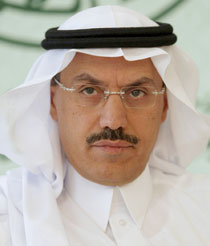JEDDAH: Today Arab News launches a regular weekly page dedicated to Islamic banking, finance and insurance (Takaful), the fastest growing phenomenon in global finance.
At a time when the conventional interest-based global financial system is in turmoil, it is a natural reaction to seek more prudent and ethical alternative systems of financial management. Islamic finance, now in its fourth contemporary decade, offers one unique alternative and is here to stay.
Global Islamic financial assets are estimated to be about $1 trillion with a potential to rise to $4 trillion by 2010. Another $1.2 trillion is estimated to be invested in commodity Murabaha contracts alone. Although these figures are still miniscule compared with the size of the conventional financial system, the growth rate of Islamic finance is phenomenal — estimated between 20 percent to 40 percent per annum, depending on asset class.
There is also strong evidence that more funds are steadily migrating to the Islamic banking system, especially in the GCC (Gulf Cooperation Council) countries and Malaysia. In the GCC countries, private liquidity is estimated at $1.6 trillion. This migration is not confined to Muslim customers. According to Al-Rajhi Bank Malaysia, 50 percent of its clients are non-Muslims. The bank not surprisingly has branches even in predominantly Chinese-populated cities such as Kuching in Malaysia.
The Islamic finance industry now offers a wide range of complex and sophisticated financial products and services. But regulators such as Muhammad Al-Jasser, the governor of the Saudi Arabian Monetary Agency (SAMA), and Zeti Akhtar Aziz, the governor of Bank Negara Malaysia, the central bank, believe that the next major challenge for the industry is its integration into the global financial system. But globalization itself brings opportunities and challenges — dynamic growth and the contagion of external shocks such as the current credit crunch. The intrinsic strengths of Shariah principles and values that underlie Islamic finance, however, provide an important underlying foundation.
Zeti also talks about the development of a New Silk Road in Islamic financial flows bridging Asia and the Middle East and extending on to Europe and beyond.
Islamic finance has a unique story to tell to the world — that its financing is essentially backed up by a range of products backed by real assets which impact on the real economy; and is a system of financial management which even the International Monetary Fund (IMF) in the past has concluded may be in a better position to absorb financial shocks than its conventional counterpart.
There is no doubt that the two largest markets in global Islamic finance are Saudi Arabia, by virtue of having the largest pool of funds in the sector, and Malaysia which arguably has the most advanced Islamic finance architecture in the world. Market players expect SAMA under Al-Jasser to open up to Islamic banking in particular and to show leadership in this field in the light of the growing globalization of the industry.
The Kingdom is well-placed to assume this leadership. More Saudi corporates are now accessing Islamic finance as part of a diversification of sources of funding strategy. Saudi project spend alone is estimated at $1.2 trillion over the next 10 years. Islamic finance is seeing a much bigger uptake of this financing need especially by such entities as Saudi Basic Industries Corp. (SABIC), Saudi Aramco and Saudi Electricity Company.
There are now four banks in the Kingdom which operate wholly under Islamic financial principles — Al-Rajhi Bank, Bank Albilad, Alinma Bank and Bank AlJazira. National Commercial Bank has already converted its retail banking business into a Shariah-compliant one, and it is only a matter of time before the bank changes over to Islamic banking. Other banks have active Islamic finance windows and products, including a number of foreign and regional banks.
Saudi Arabia’s population demography is young. There is evidence that Islamic finance is increasingly popular amongst the young, especially in the light of the credit crunch and the financial crisis in conventional banking.
The growth and globalization of Islamic finance offers also opportunities and challenges for the media coverage of the industry. In pioneering this dedicated weekly section, in addition to its normal coverage of the industry, Arab News, as the leading English daily in the region, is merely servicing its business clients and general readership on this new financial growth phenomenon. Our aim is to inform our readers about the latest developments and trends in the national, regional and global Islamic finance industry, based on objective and constructive reporting.


